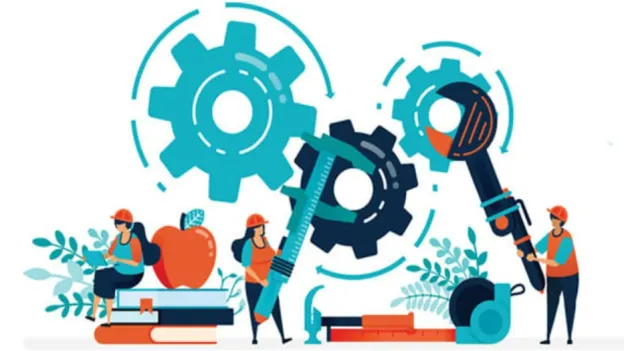Physical Address
304 North Cardinal St.
Dorchester Center, MA 02124
Physical Address
304 North Cardinal St.
Dorchester Center, MA 02124


Balancing Innovation and Employment Amidst Projected Job Transformations Automation, a multifaceted concept encompassing the integration of technology to execute tasks previously handled by humans, stands at the crossroads of technological advancement and employment considerations. As projections of future job transformations give rise to concerns, there is an imperative to strike a delicate balance between innovation and safeguarding employment prospects. Through strategic policies, investments, and forward-thinking approaches, the impending transition can be effectively managed to mitigate the specter of significant job losses.
Defining Automation’s Scope
Automation encapsulates the deployment of technological solutions to carry out functions that were traditionally executed by human workers. This phenomenon ranges from simple, repetitive tasks to complex cognitive functions, shaping a diverse landscape of potential changes in the labor market.
Diverse Projections, Common Trends
Projections regarding the extent of future job losses induced by automation vary among experts and scholars. Despite differing perspectives, a common thread emerges – a concern over the potential for substantial shifts in employment dynamics. This shared sentiment underscores the need for proactive measures to prepare the workforce for impending changes.
Navigating the Transition Through Policy
Safeguarding employment amid automation’s rise demands the implementation of well-crafted policies. Governments and institutions must craft frameworks that support the reskilling and upskilling of the workforce, ensuring that individuals possess the skills necessary to adapt to evolving job roles. Policies should also encourage the collaboration between industry and education sectors to foster the cultivation of skills that align with emerging demands.
Investments: A Pillar of Preparedness
Strategic investments are indispensable in preparing for the inevitable changes automation brings. Ramping up investment in research and development, fostering innovation hubs, and facilitating technology adoption across sectors can drive economic growth and create opportunities for the workforce to transition into newly emerging roles.
Holistic Workforce Strategies
Beyond policy and investment, workforce strategies are pivotal in navigating the path forward. Embracing lifelong learning, promoting a culture of adaptability, and encouraging entrepreneurship can empower individuals to thrive in a changing employment landscape. Building a diverse skill set, including soft skills such as critical thinking and emotional intelligence, positions workers to remain valuable in a technology-infused world.
Collaboration and Collective Action
Collaboration between governments, industries, academia, and civil society is paramount in steering automation’s impact on the job market. An inclusive dialogue allows for a comprehensive understanding of the challenges and opportunities presented by automation, enabling the creation of comprehensive solutions that benefit all stakeholders.
A Balanced Future
The nexus of automation and employment presents a nuanced challenge, necessitating an integrated and forward-looking approach. By cultivating a synergy between policy measures, investments, and adaptable workforce strategies, society can transition into an era where innovation harmonizes with employment stability.
With concerted efforts, a proactive mindset, and a commitment to collective action, it is possible to channel automation’s potential for positive transformation, ultimately steering the course toward an employment landscape characterized by resilience, adaptability, and sustainable growth.
Last Updated on: Wednesday, August 16, 2023 7:54 am by Admin | Published by: Admin on August 16, 2023 7:54 am | News Categories: BUSINESS, EDUCATION, GENERAL, INDIA
About Us: News Centre 24 covers the latest News on Current News, Business, Sports, Tech, Entertainment, Lifestyle, Automobiles, and more, led by Editor-in-Chief Ankur Srivastava. Stay connected on Facebook, Instagram, LinkedIn, X (formerly Twitter), Google News, and Join Our Community.
Disclaimer: At News Centre 24, we are committed to providing accurate, reliable, and thoroughly verified information, sourced from trusted media outlets. For more details, please visit our About, Disclaimer, and Privacy Policy pages. If you have any questions, feedback, or concerns, feel free to contact us through email.
Contact Us: [email protected]